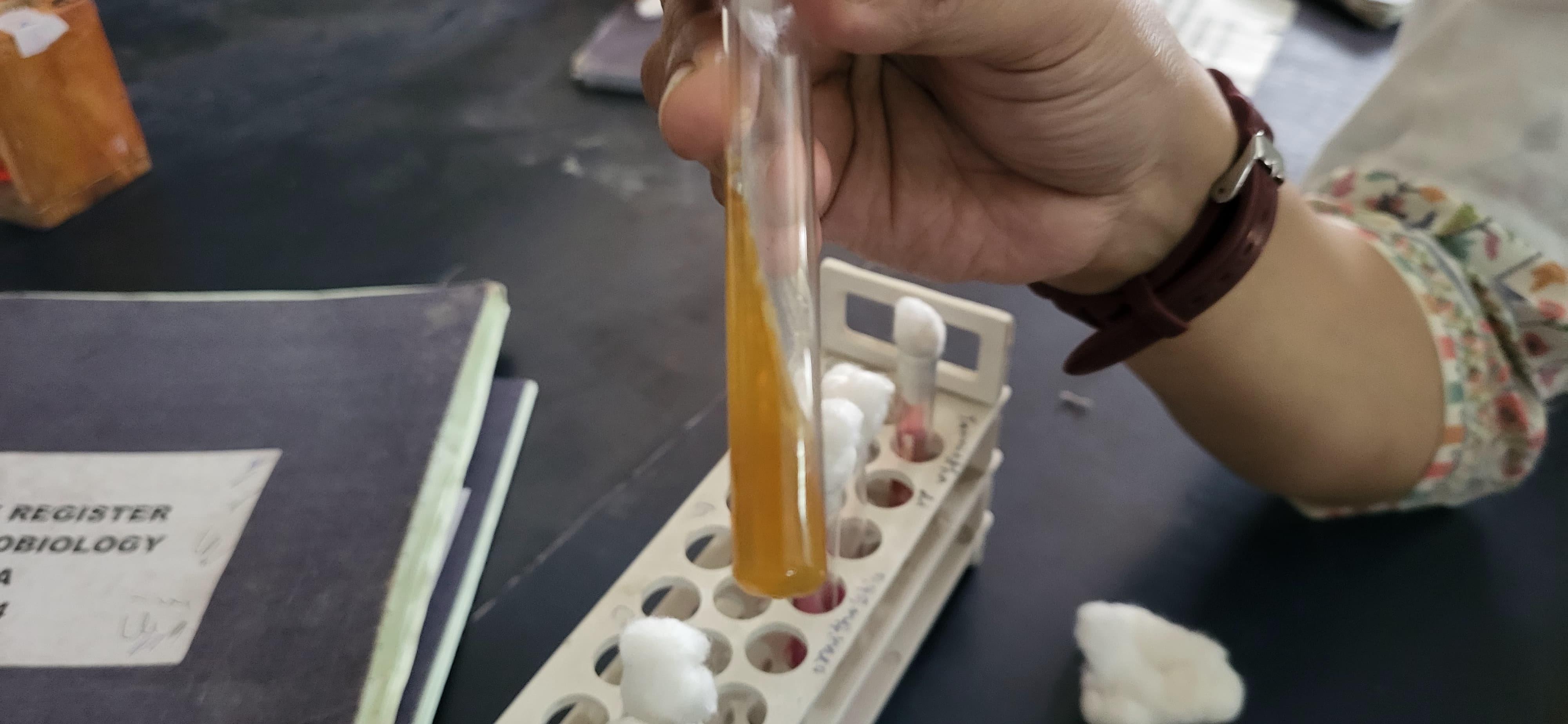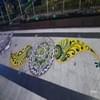What Students Say
Likes
- The teachers the realy good . education quality is so good
- This college is very much old , it established in 2004 , here many cultural programs like freshers, fest , rabindra jayanti and some medical programs occurs which help you to relax also become knowledgeable.
- Location of my hostel is quite good avery thing is near
Dislikes
- No annual or tech fest are organised.. so we get bored
- Very monotonous also old concept ... no students association are there don't have any rights to say anything
- Tuition costs: the high cost of tuition and student loans can be a significant source of stress and financial burden.
These insights are automatically extracted from student reviews
Why To Join WBUHS - Reviews & Rating






Most Popular Tags
Reset All Filter
Likes
- The quality of learning facilities like library
- Faculty expertise teaching method is commendable
- Quality of social interactions are better
Dislikes
- I think infrastructure could be much better
- No effective placement services are there
- Quality of hostel campus food should be improved
Course Curriculum Overview:
I like to treat patient actually...and when I was young..the stethoscope use to attract me whenever I get to any hospital..as I am a 3rd year mbbs student so till now I have minimal real life experience...
Report
Likes
- Being Government Medical College, fees in our college is affordable.
- Friendly environment in the college, seniors are also very helpful.
- Faculty of the college is outstanding. All the time they try to improve our knowledge and skills.
Dislikes
- Infrastructure of the college is overall bad.
- There is no superspeciality department in our college.
- The surrounding area of the college is very bad and polluted.
Course Curriculum Overview:
The curriculum is very good for preparation of the real world applications. Clinical study and clinics classes should be given more priority. Teaching methods should be more clinically correlated. The frequency and timing of the exams are good
Report
Likes
- Our college have a tertiary cancer building
- Campus is very exciting and huge amount of social interaction
- Each faculty in our college is very good
Dislikes
- Super speciality department should be made immediately
- Our college should focus on cleanliness and hygiene
- More clinical orientation needed for students rather than just slide or ppt reading on theory classes
Student Snaps:

Course Curriculum Overview:
These curriculum provides lot of scope in handling the patient and lot of researches,this prepare us for real world applications or further academic pursuits
Area of improvement: more clinical orientation needed for students rather than just slide reading
Report
Likes
- The faculties are super friendly and well qualified
- Location is very good as both metro station and train station is present near me
- Labs and hospital is well equipped, gets hands on experience
Dislikes
- Poor sex ratio , boys are way more as compared to girls
Course Curriculum Overview:
The course is very much practical based , we are taught every cases in clinical class on real patients after reading the theory from books. We also has one year mandatory internship in every departments .
Report
Likes
- Our college had very good faculty. Professors are very helpful.
- Playground is very large. Any game can be played.
- Very peaceful environment is there. This is new college, show there is modern facility.
Dislikes
- Lack of more seniors as this college is new.
- This college is new so there is lack of some facility.
- Facility wise this college needs to be improved.
Placement Experience:
After ninth semester student are eligible for internship and campus. Stipened paid is twenty eight thousand. This is good stipened as in other states this is fifteen to twenty thousand. Almost hundred percent student got placed.
Report
Likes
- Teaching strategies of my faculty members are fabulous using equipment and ppt for understanding
- Computer lab is available during whole college hour for any of the information
- Library is also available and studying in quite and relaxed mind
Dislikes
- Small campus size , which is not frerrable as dislike
- Variety of canteen food, and have to go outside for other foods
Course Curriculum Overview:
Course is very interesting and the extra curricular activities are also there to make mind exploration and making more interesting and curious about the course. The time of the exam is 3 hours which is enough to explain all the topics discussed in the class.
Report
Likes
- It's a academic is too good that is best for making a good doctor
- Here the cultural events that is so much things that you enjoy your college life
- There is too many sports game will be available for you
Dislikes
- Grounds is too small for playing games.
- Water purifier is not too much it's face difficulty
- Rest room are not too much for the students
Student Snaps:





Placement Experience:
It's a medical clg .This will make you a good doctor and then you can earn too much money after you do the ug/pg from this clg and package will be aprox min14to 18lacs or too higher than this it's depend on you
Report
Likes
- In NIRF ranking system our college get the 21 rank in 2024
- Our college has more branches for pg courses
- Having a beautiful campus with best infrastructure
Dislikes
- 1year hostel facility is to pore that we facing now
- Boys is to girls ratio is about 3:1 in our college
Course Curriculum Overview:
Medical profession is very good I found because It saves others life . In our college I found that many patients come for their health checkup and we also getting the valuable respect from the patient
Report
Likes
- The college has large well equipped laboratory
- The lecture theatre are air conditioning and has projector
Dislikes
- The hostel accomodation is not upto the mark
Course Curriculum Overview:
The course offers the best opportunity to serve the humanity. The doctors are highly respected in society. The exams occurs in every 2 months. There are semester exams , pre proff exams and proff exams. The exams are on moderate to difficult scale. Consistent study is required to pass exams .
Report
Likes
- Ambience, food and campus is just good enough
Dislikes
- Management and behaviour of staff, as if they are paying us to study
Course Curriculum Overview:
The course curriculum is focused on hardwork and dedication, One should work hard in order to achieve their dream and MBBS is one of them where you must work hard.
Saving lives is a noble profession and not many get chance to do it, So one should utilise the opportunity they got.
Report
Do you think the data is wrong ? Report Here
WBUHS Latest News
NEET PG MD Medicine Cutoff 2025: Check College-wise Expected Cutoff Rank
Written ByPranjal Sapraon Aug 21, 2025

NEET UG Counselling 2025: MCC Ends Confusion, Confirms No Change to Round 2 Seat Allotment
Written BySubrato Chatterjeeon Sep 19, 2025
.png?h=78&w=78&mode=stretch)
NEET 2025 Cut off (Expected) for Seth G.S Medical College, Mumbai: Check Previous Years Opening & Closing Ranks
Written ByShivam Yadavon Jun 16, 2025

Discover More Colleges


![Institute of Post Graduate Medical Education And Research - [IPGMER]](https://image-static.collegedunia.com/public/college_data/images/appImage/10560_SSKM_APP.jpg?h=111.44&w=263&mode=stretch)

Institute of Post Graduate Medical Education And Research - [IPGMER]
A.J.C.Bose Road, Kolkata
4.1(39)
₹12500First year Fees
![Nilratan Sircar Medical College & Hospital - [NRS]](https://image-static.collegedunia.com/public/college_data/images/appImage/1489063561cover.jpg?h=111.44&w=263&mode=stretch)

![KPC Medical College and Hospital - [KPCMC&H]](https://image-static.collegedunia.com/public/college_data/images/appImage/10610_KPCM_APP.jpg?h=111.44&w=263&mode=stretch)

KPC Medical College and Hospital - [KPCMC&H]
Jadavpur University, Kolkata
4.2(35)
₹400000First year Fees
![Calcutta National Medical College - [CNMC]](https://image-static.collegedunia.com/public/college_data/images/appImage/7564_CMC_New.jpg?h=111.44&w=263&mode=stretch)

![College of Medicine and Sagore Dutta Hospital - [CMSDH]](https://image-static.collegedunia.com/public/college_data/images/appImage/57943_1483695982ccade.png?h=111.44&w=263&mode=stretch)


![West Bengal University of Health Sciences - [WBUHS]](https://image-static.collegedunia.com/public/college_data/images/logos/uv26027.jpg?h=71.7&w=71.7&mode=stretch)










.png?h=72&w=72&mode=stretch)



![Institute of Post Graduate Medical Education And Research - [IPGMER]](https://image-static.collegedunia.com/public/college_data/images/logos/1395300276Institute of Post Graduate Medical Education And Research.png?h=72&w=72&mode=stretch)

![Vivekananda Institute of Medical Sciences - [VIMS]](https://image-static.collegedunia.com/public/college_data/images/logos/1676371088th.jpg?h=72&w=72&mode=stretch)
![Calcutta School of Tropical Medicine - [CSTM]](https://image-static.collegedunia.com/public/college_data/images/logos/1522674352Logo.jpg?h=72&w=72&mode=stretch)
![KPC Medical College and Hospital - [KPCMC&H]](https://image-static.collegedunia.com/public/college_data/images/logos/1561719376logo20.png?h=72&w=72&mode=stretch)


![Nilratan Sircar Medical College & Hospital - [NRS]](https://image-static.collegedunia.com/public/college_data/images/logos/1418032446logo.png?h=72&w=72&mode=stretch)

![Burdwan Medical College & Hospital - [BMC]](https://image-static.collegedunia.com/public/college_data/images/logos/1762680497Screenshot20251109145200.png?h=72&w=72&mode=stretch)

![R. G. Kar Medical College and Hospital - [RGKMCH]](https://image-static.collegedunia.com/public/college_data/images/logos/1473168600logonew.png?h=72&w=72&mode=stretch)




Comments